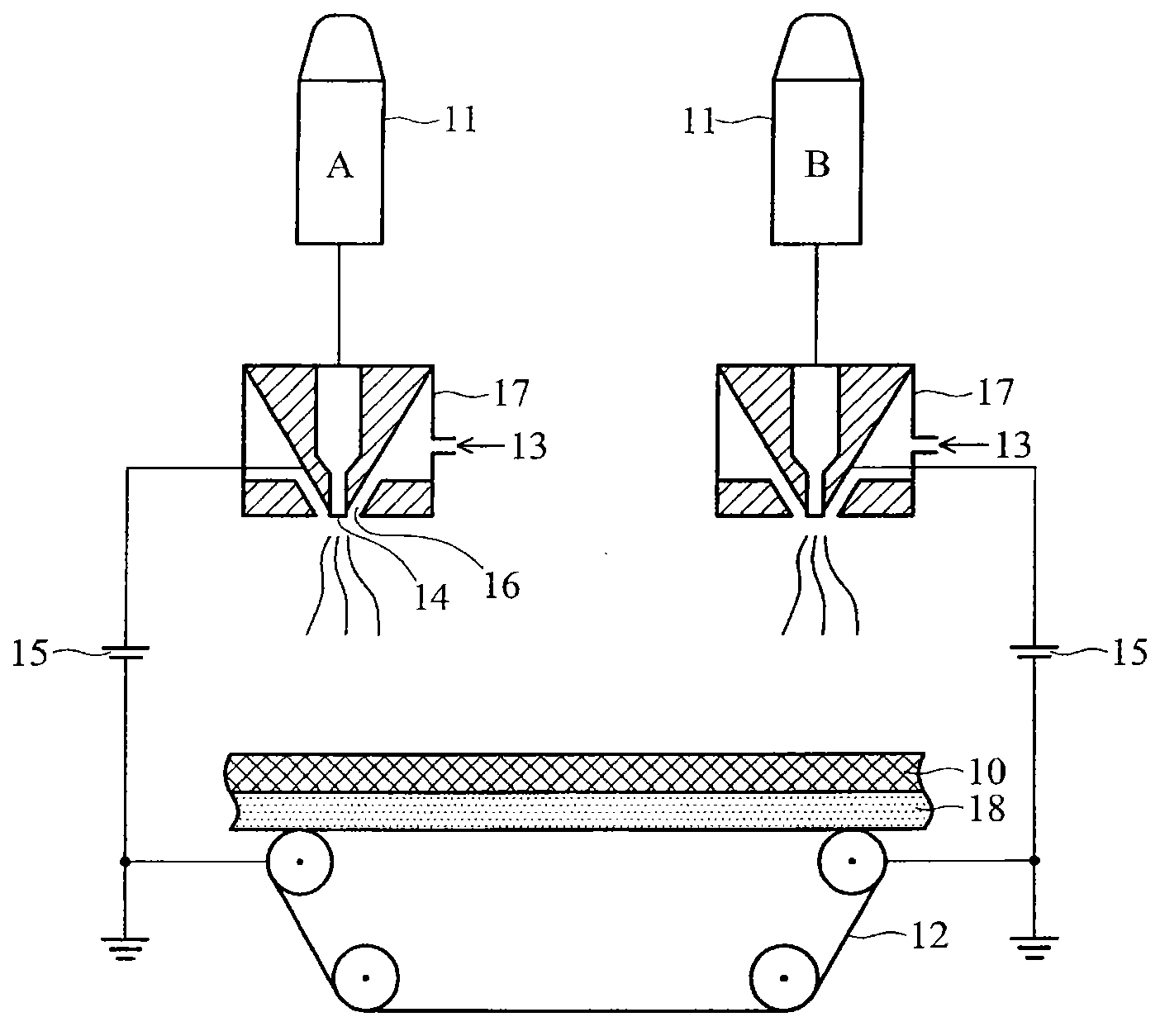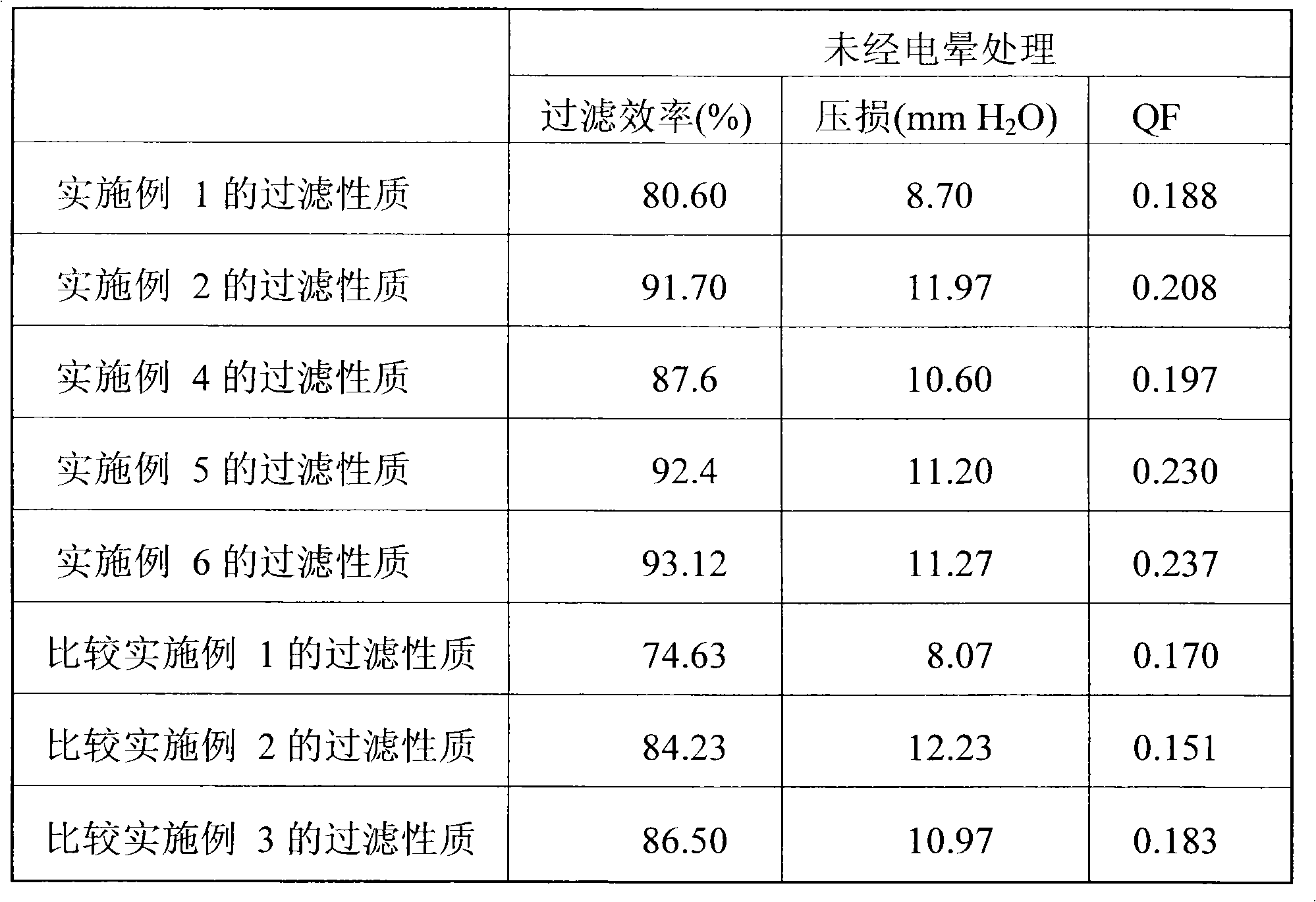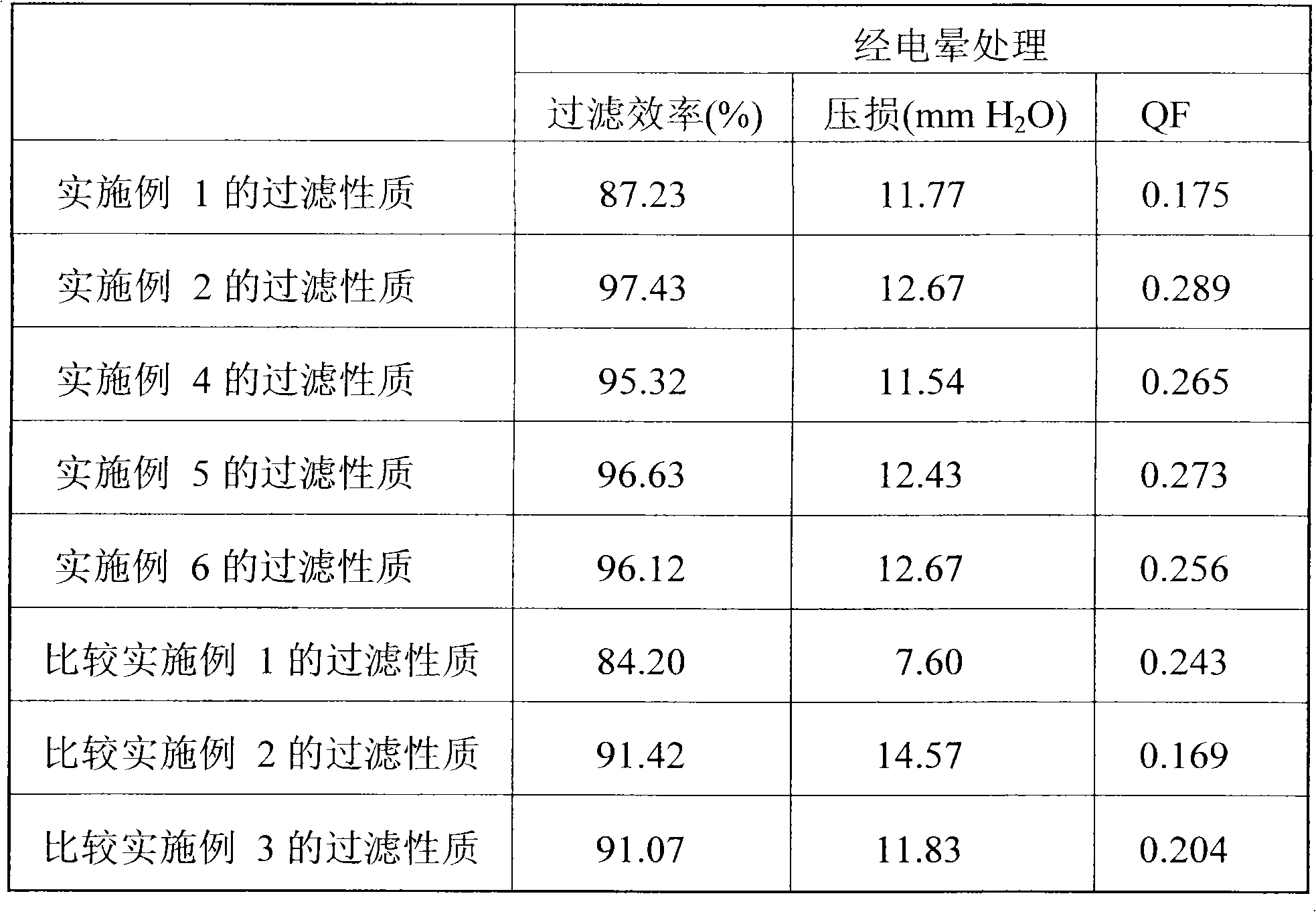Nanofiber filtration material and forming method thereof
A nanofiber and filter material technology, applied in the field of nanofiber filter material, can solve the problems of low soft mechanical strength, high pressure loss, and fragility
- Summary
- Abstract
- Description
- Claims
- Application Information
AI Technical Summary
Problems solved by technology
Method used
Image
Examples
Embodiment 1
[0023] In this embodiment, the polymer solution is polycarbonate dissolved in a mixed solvent of tetrahydrofuran and dimethylethylamine, and the concentrations are 12% and 15% (by weight, the same below). The polymer solutions 12% and 15% are respectively interwoven in an electric field environment by electrospinning in a uniform interlaced manner to form two kinds of nanofiber diameter distributions and uniformly mixed to form a nanofiber layer cotton web and deposited on a grammage of 15g / m 2 Meltblown nonwoven cotton mesh substrate. The distance between the spinneret and the collecting cotton net base material is 20cm, the applied voltage is 40kV and the output speed of 25μL / min / hole, and there is gas-assisted stretching of the fiber at the spinneret at the same time, the polymer solution is 12% and 15% %The two concentrations are interwoven in the above-mentioned electric field environment in a uniform interlacing manner to form two kinds of nanofiber diameter distribution...
Embodiment 2
[0025] In this embodiment, the polymer solution is polycarbonate dissolved in a mixed solvent of tetrahydrofuran and dimethylethylamine, and the concentrations are 12%, 13.5%, and 15% respectively. Under the same electrospinning conditions and substrate as in Example 1, a nanofiber cotton web is formed, the difference is that the three concentrations of polymer solutions of 12%, 13.5%, and 15% are used to interweave in a uniform interlaced manner to form three A nanofiber layer cotton web with nanofiber diameter distribution and uniform mixing, the nanofiber layer gram weight is measured as 1.36g / m 2 , the thickness is 11 μm, and the average fiber diameter of the nanofiber cotton web formed by uniform mixing is 150nm±30nm. The nanofibrous layer formed by uniformly interlacing the three concentrations of polymer solutions of 12%, 13.5%, and 15% respectively, and the filtration properties of the 260nm particles measured by TSI 8130 at a gas flow rate of 14cm / s are shown in Table...
Embodiment 3
[0027] In this example, under the same electrospinning conditions as in Example 2, a composite nanofiber cotton web is formed, the difference is that the corona-treated single-layer composite nanofiber cotton web is laminated to form a double-layer composite nanofiber Cotton web, with 260nm particles, was measured by TSI 8130 at a gas flow rate of 5.3cm / sec, and its filtration properties are shown in Table 3.
PUM
| Property | Measurement | Unit |
|---|---|---|
| Thickness | aaaaa | aaaaa |
| Fiber diameter | aaaaa | aaaaa |
| Average fiber diameter | aaaaa | aaaaa |
Abstract
Description
Claims
Application Information
 Login to View More
Login to View More - R&D
- Intellectual Property
- Life Sciences
- Materials
- Tech Scout
- Unparalleled Data Quality
- Higher Quality Content
- 60% Fewer Hallucinations
Browse by: Latest US Patents, China's latest patents, Technical Efficacy Thesaurus, Application Domain, Technology Topic, Popular Technical Reports.
© 2025 PatSnap. All rights reserved.Legal|Privacy policy|Modern Slavery Act Transparency Statement|Sitemap|About US| Contact US: help@patsnap.com



